Pop Culture
In Pictures: The Estate of J.R.R. Tolkien Publishes Rarely Seen Drawings From ‘The Lord of the Rings’ and Other Books
A new website from the Tolkien estate includes some previously unpublished artwork by the fantasy author.
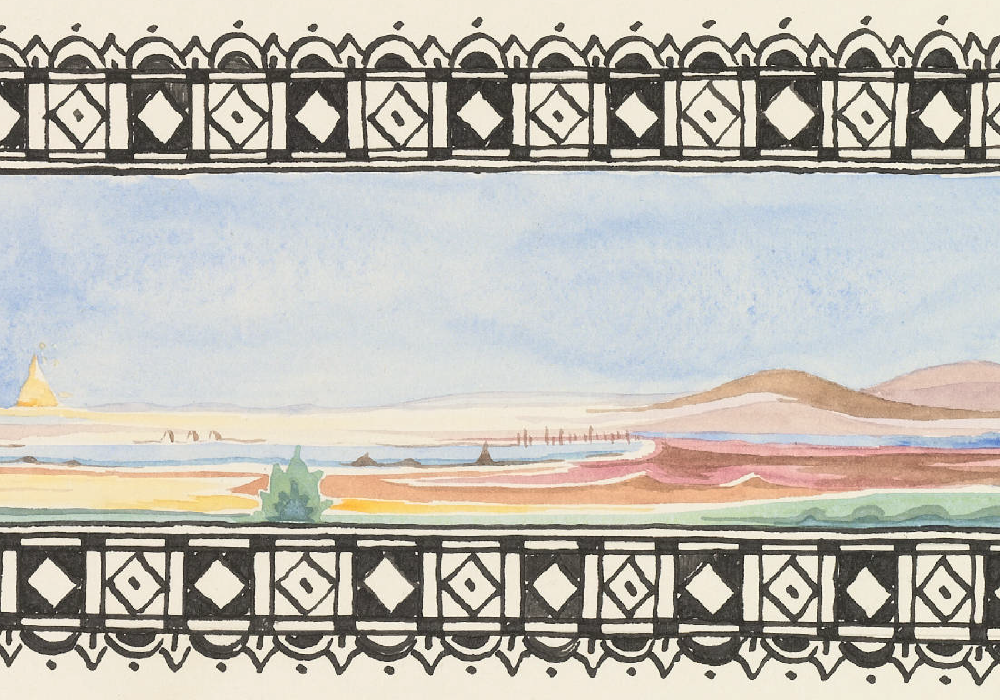
A new website from the Tolkien estate includes some previously unpublished artwork by the fantasy author.

Sarah Cascone

The estate of renown author J.R.R. Tolkien has released a new website featuring artworks, some previously unseen, by the author of The Hobbit and its related trilogy, The Lord of the Rings.
A linguist who created the land of Middle Earth to give life to his invented languages, Tolkien also was a talented artist and mapmaker who illustrated his ideas.
The father of the modern fantasy genre, Tolkien died in 1973. His books became bestsellers, with more than 100 million copies of Lord of the Rings sold since their initial release between 1954 and 1955.
Tolkien’s art and writings went hand and hand, with illustrations serving as an an integral part of his creative process. Sometimes the words would inspire the artwork, and sometimes drawing a scene would move the narrative in new directions.
The author meticulously mapped out the world of Middle Earth to ensure the accurate movements of his large cast of characters.
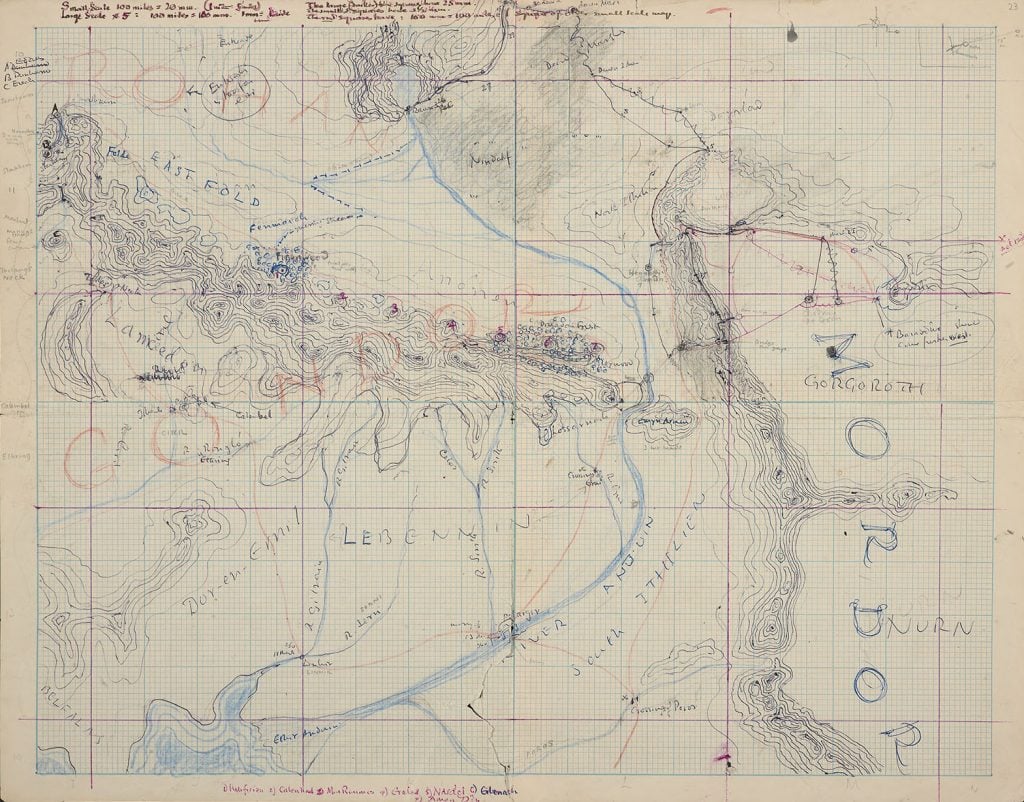
J.R.R. Tolkien, Map of Rohan, Gondor and Mordor, drawn so that Tolkien could accurately plot the action as he wrote book five of The Lord of the Rings (ca. 1948). It was re-drawn for publication in The Return of the King by his son, Christopher Tolkien. Courtesy of the Tolkien Estate.
In addition to a number of detailed maps, the estate has released illustrations Tolkien created for The Hobbit, The Lord of the Rings, and The Silmarillion, as well as drawings he made for his children, landscapes drawn from real life, and imagined abstractions. The artworks are each accompanied by detailed descriptions.
The website’s new material includes a timeline of Tolkien’s life and examples of his calligraphy.
There are also previously unpublished photographs of Tolkien and his family, including his son Christopher, who drew the final versions of the Lord of the Rings maps for publication. He died in 2020.
The estate launched the site on February 26, an important date in Lord of the Rings lore. It marks the moment when, in 3019, the Fellowship of the Ring was broken, and Frodo Baggins and Samwise Gamgee set off alone to Mordor.
The series reached a new audience when director Peter Jackson helmed the award-winning The Lord of the Rings film trilogy from 2001 to 2003, and followed it with a prequel trilogy for The Hobbit from 2012 to 2014. A new streaming series, The Lord of the Rings: The Rings of Power, based on Tolkien’s history of Middle Earth, is currently in production with Amazon, set for release on September 2.
See more Tolkien artworks below.
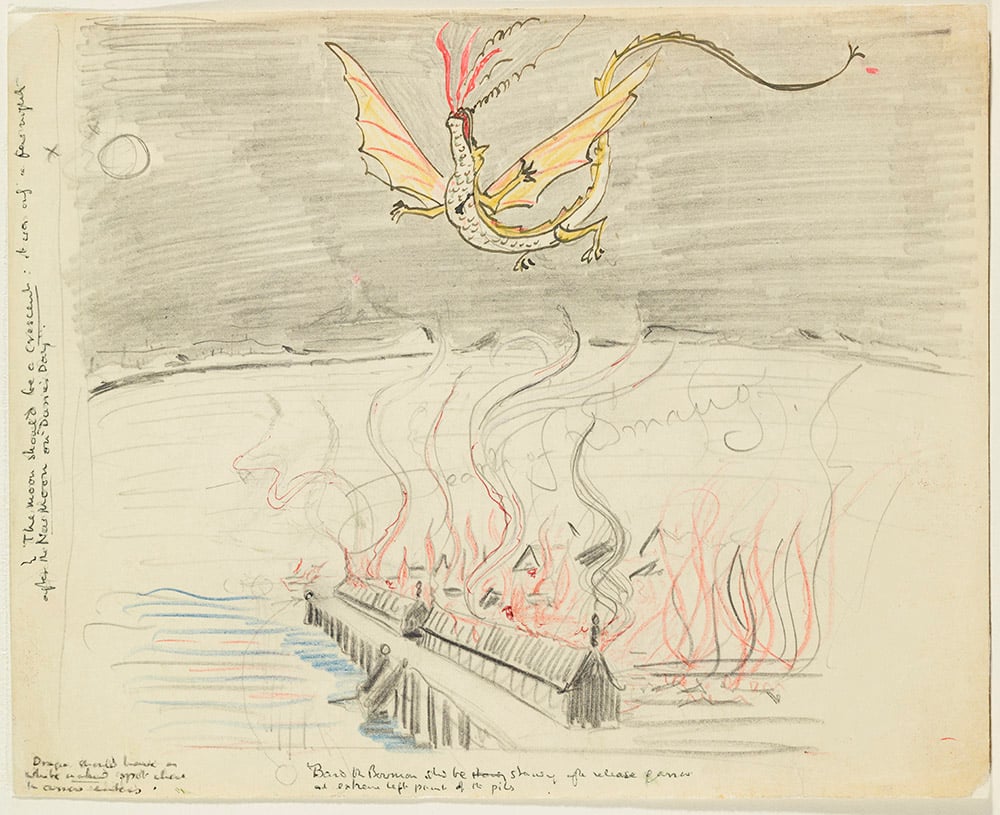
J.R.R. Tolkien, Death of Smaug’ I1936). Tolkien did not intend this rough illustration to be published. Yet many years afterwards, the sketch was used as the cover design for the Unwin paperback edition of The Hobbit in 1966. Courtesy of the Tolkien Estate.
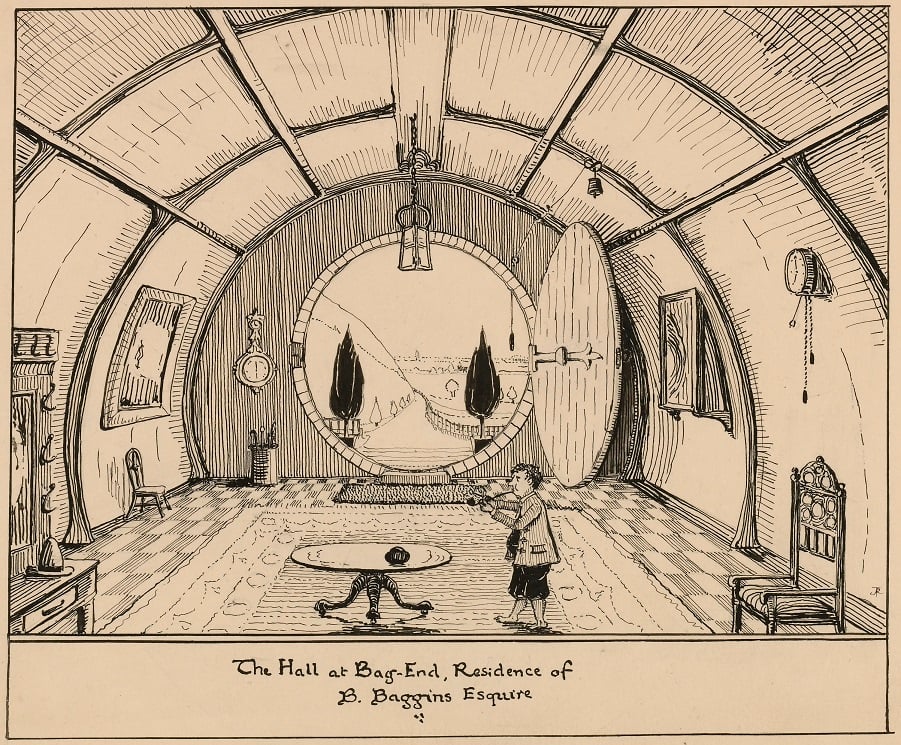
J.R.R. Tolkien, The Hall at Bag-End, Residence of B. Baggins Esquire (January 1937). Courtesy of the Tolkien Estate.
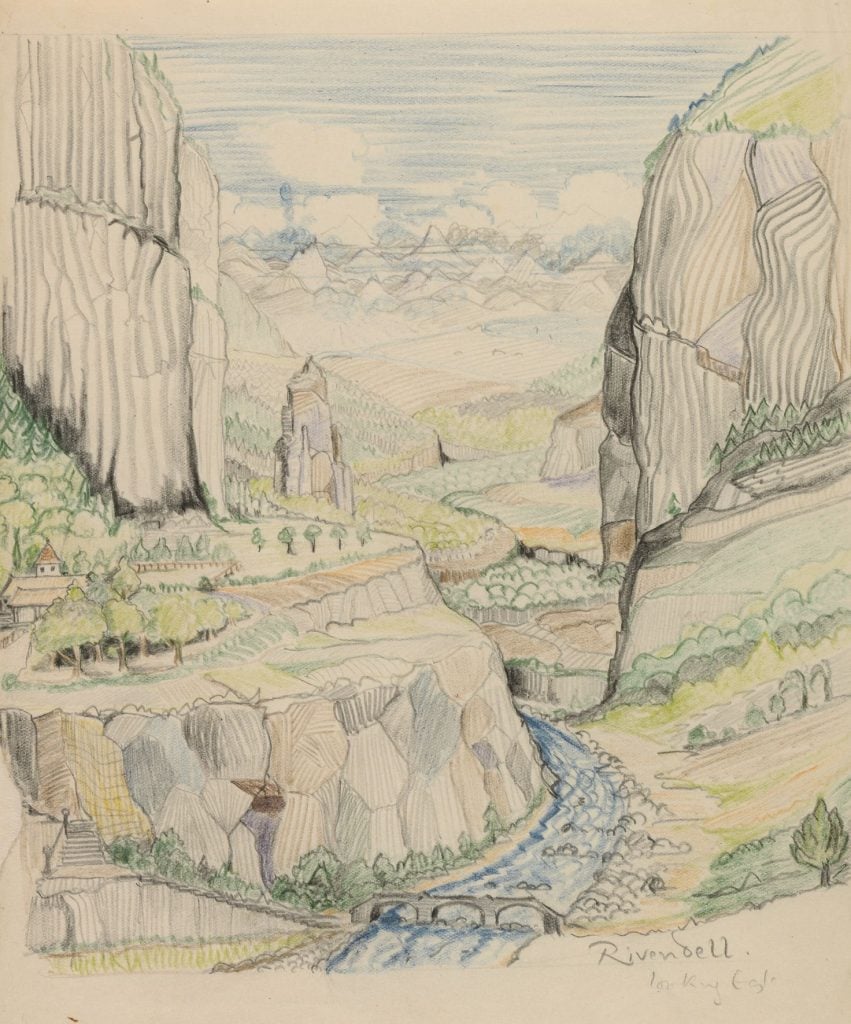
J.R.R. Tolkien, Rivendell looking East (early 1930s). This drawing became the basis for the 1937 watercolor of Rivendell in which the mountain walls are drawn closer together, intensifying the depth of the chasm and the secret location of the “last homely house.” Courtesy of the Tolkien Estate.

Tolkien drew two preparatory sketches and two finished drawings of the hall in Beorn’s house. They resemble the mead halls where Anglo-Saxon warriors would have gathered to feast, drink and sleep. Courtesy of the Tolkien Estate.
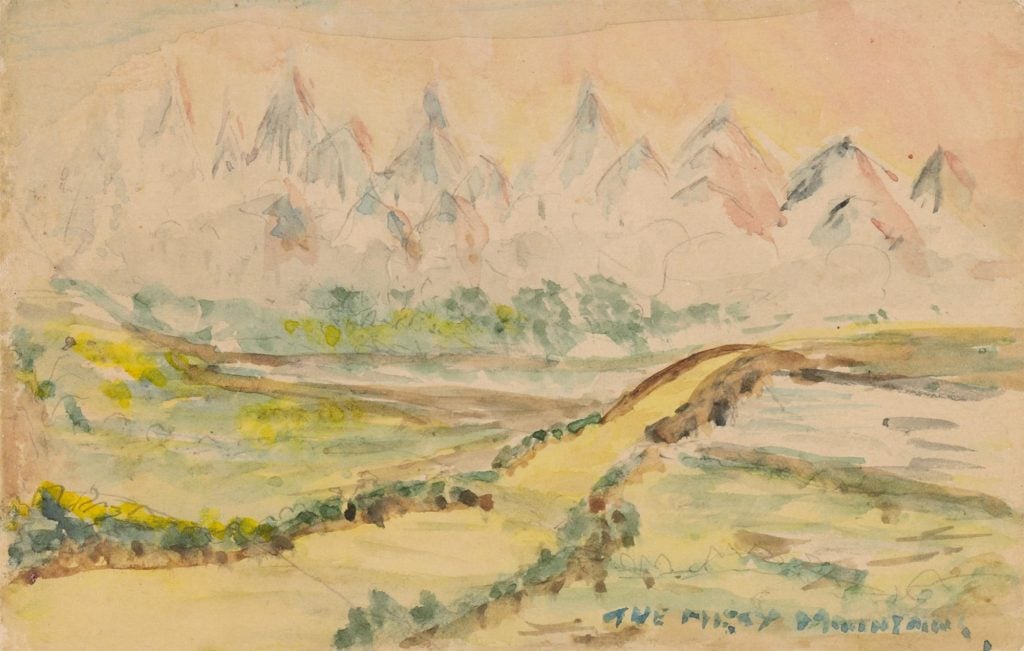
J.R.R. Tolkien, The Misty Mountains. An undated painting of the mountain range that features significantly in both The Hobbit and The Lord of the Rings. Courtesy of the Tolkien Estate.
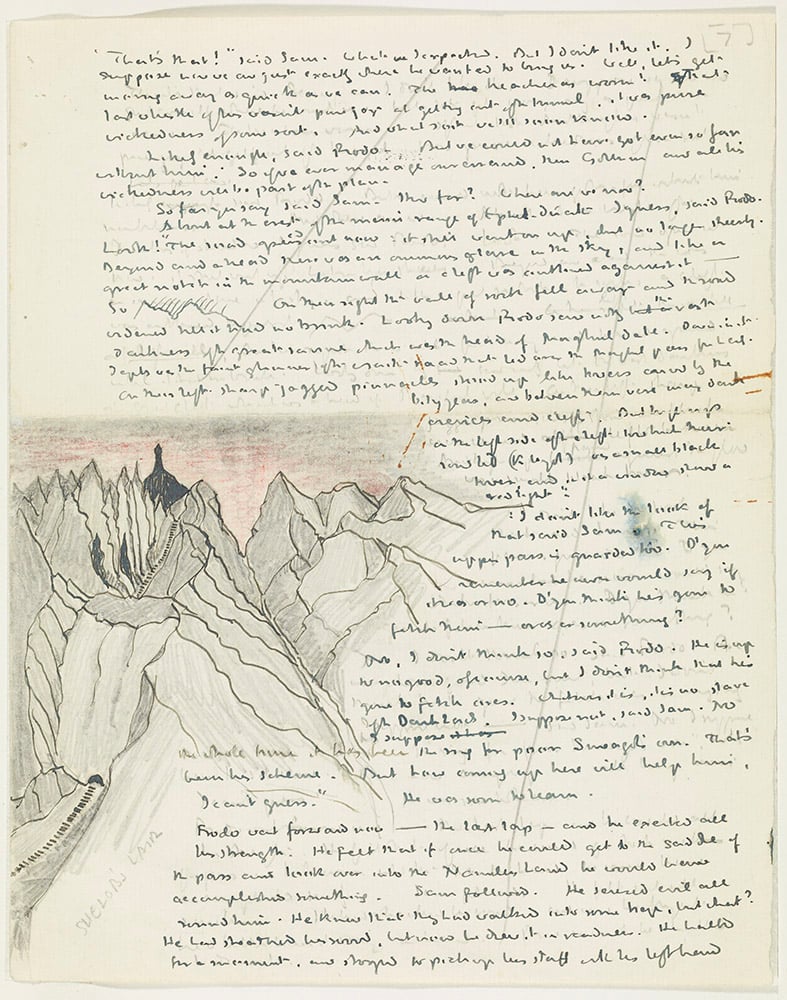
J.R.R. Tolkien, Shelob’s Lair (1944). As Tolkien wrote a chapter titled “The Stairs of Cirith Ungol,” he stopped to sketch out the approach to the fortress. Courtesy of the Tolkien Estate.
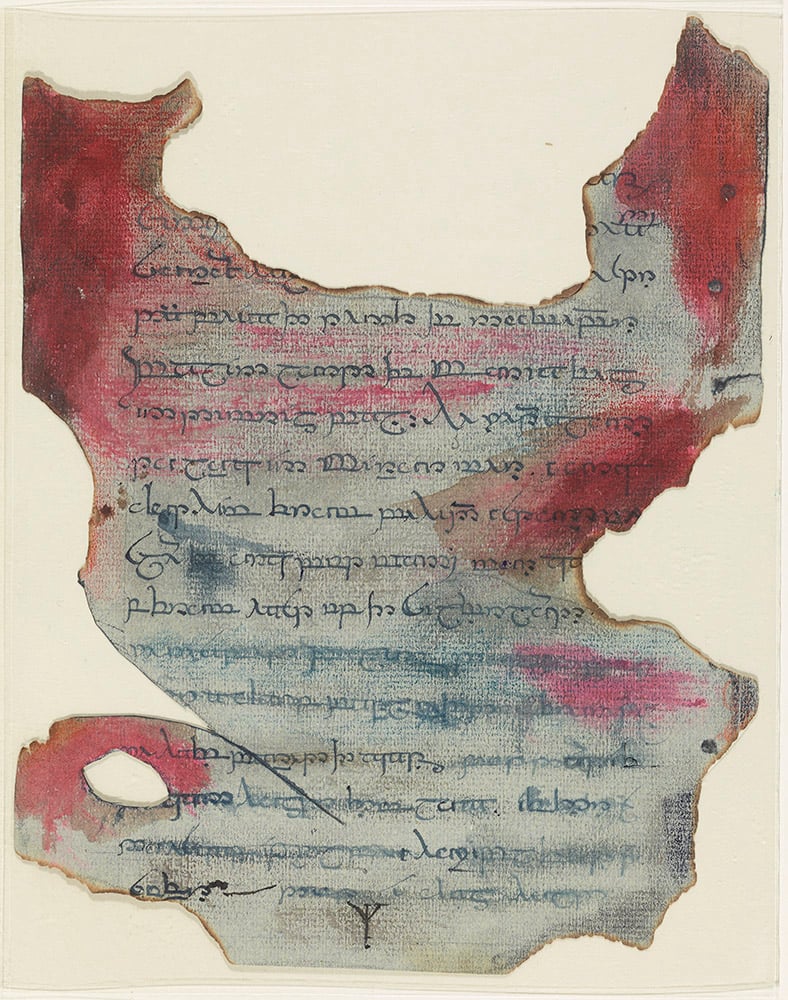
J.R.R. Tolkien, A page from the Book of Mazarbul (1940s). This book was found by the Fellowship as they journeyed through the Mines of Moria. Courtesy of the Tolkien Estate.

J.R.R. Tolkien, Mithrim (1920s), detail. This pastel landscape of Lake Mithrim in the land of Hithlum, from The Silmarillion, is further enhanced by the addition of a striking black and white border design. Courtesy of the Tolkien Estate.
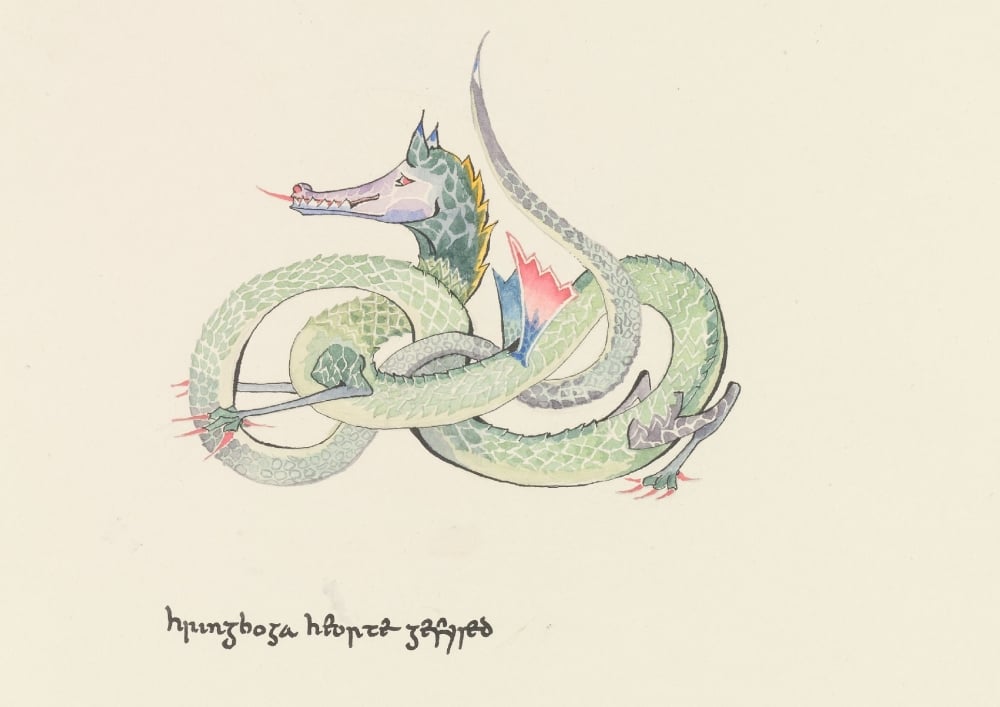
J.R.R. Tolkien, hringboga heorte gefysed (September 1927). The title is from a line in Beowulf, which translates as, “Now was the heart of the coiling beast stirred.” Tolkien studied and taught this epic poem throughout his career. Courtesy of the Tolkien Estate.